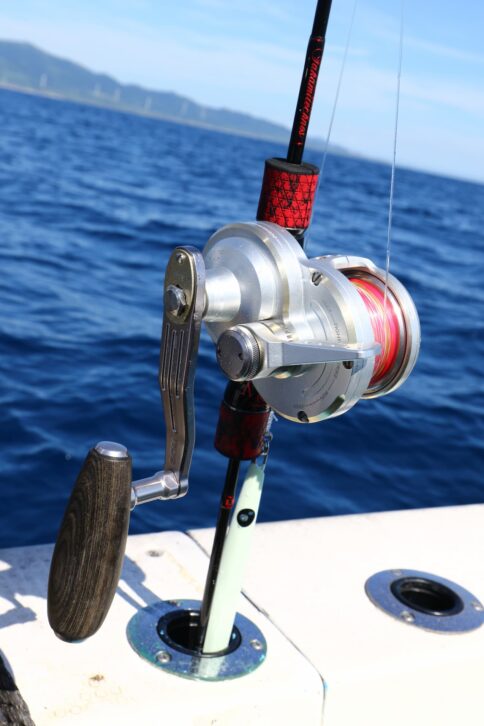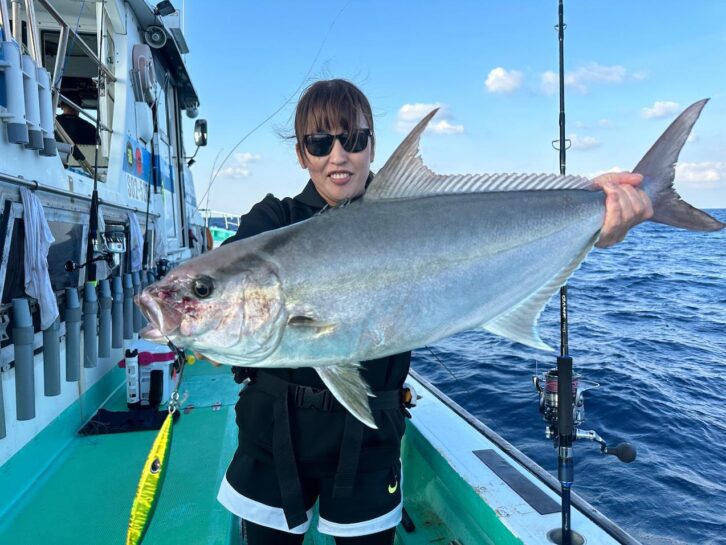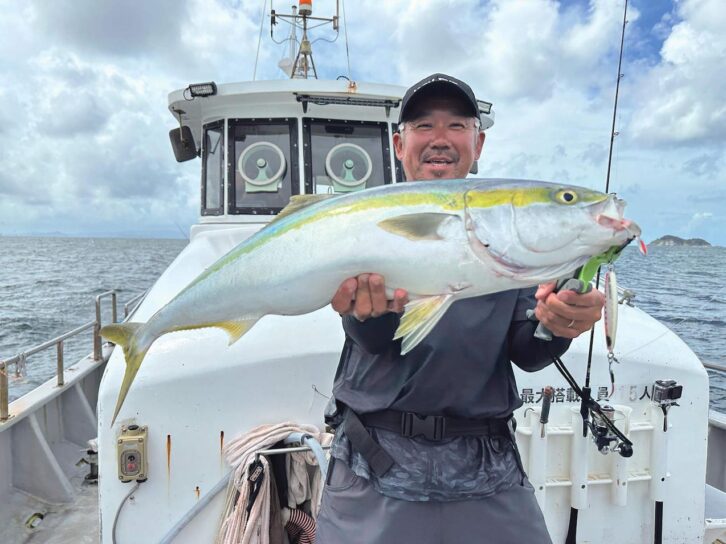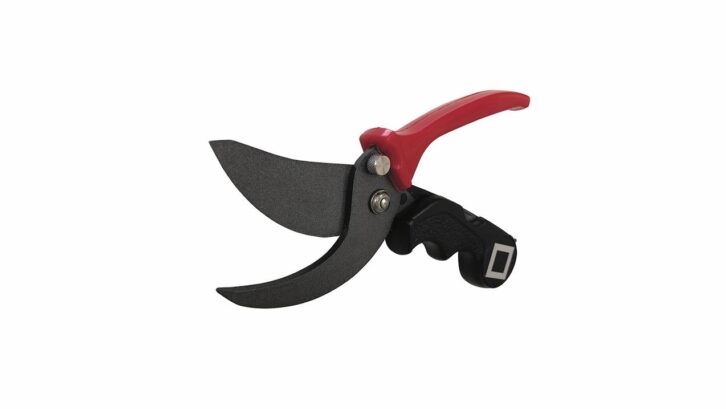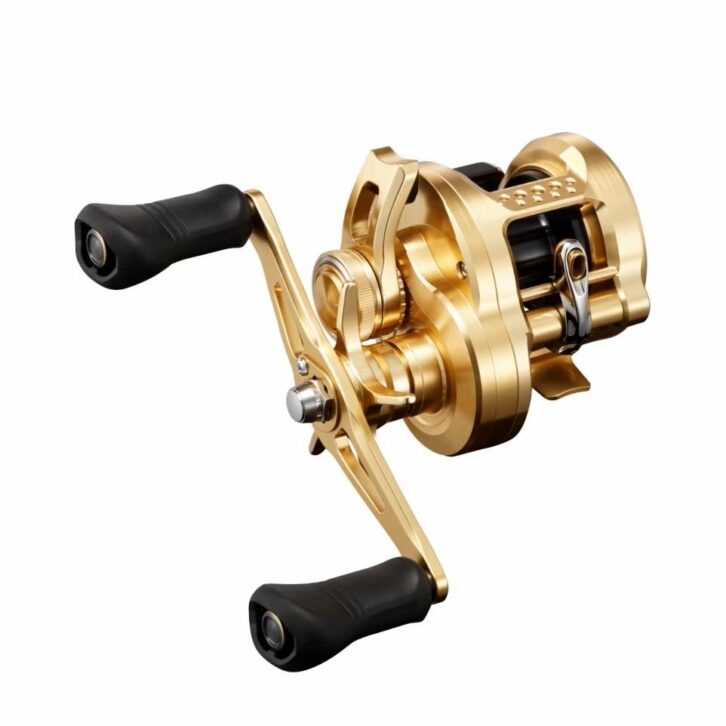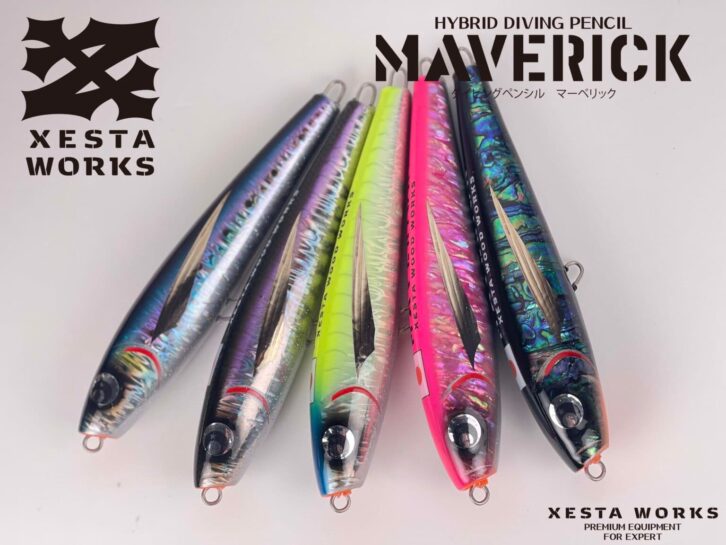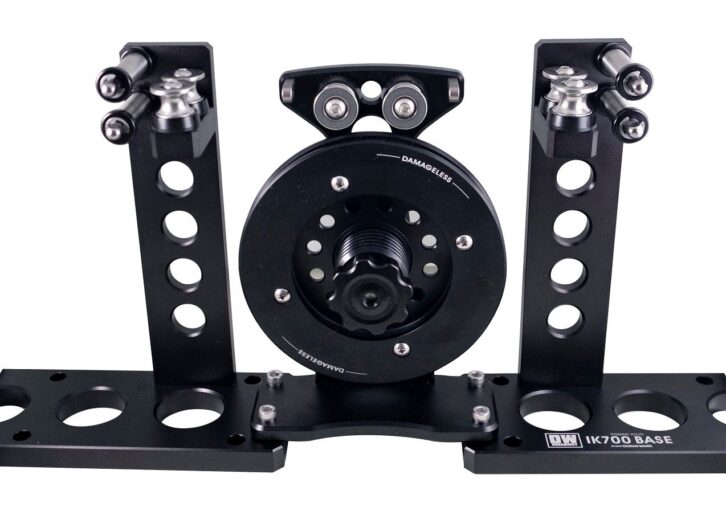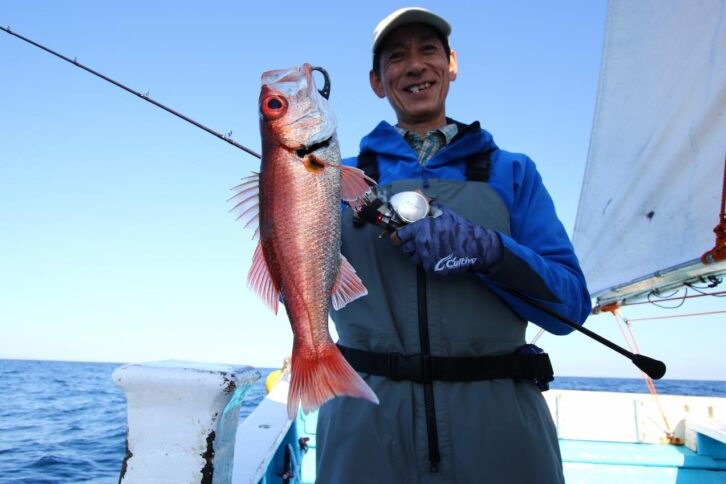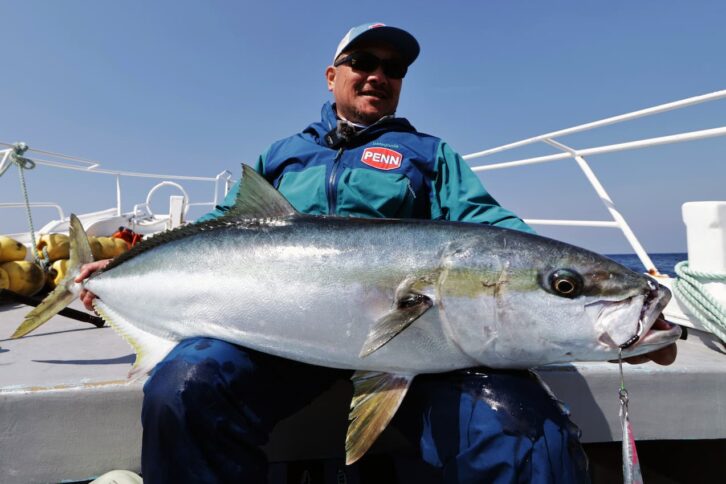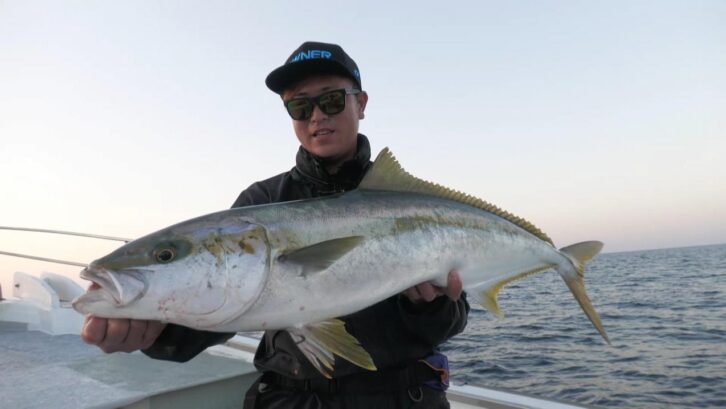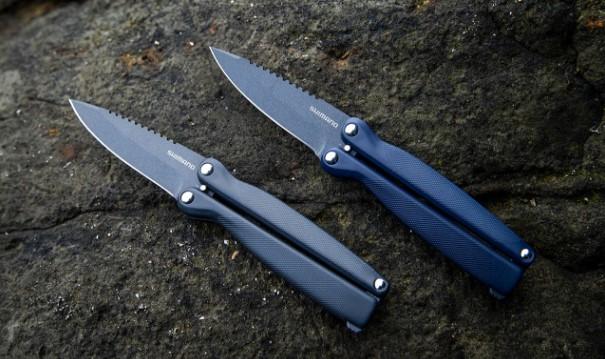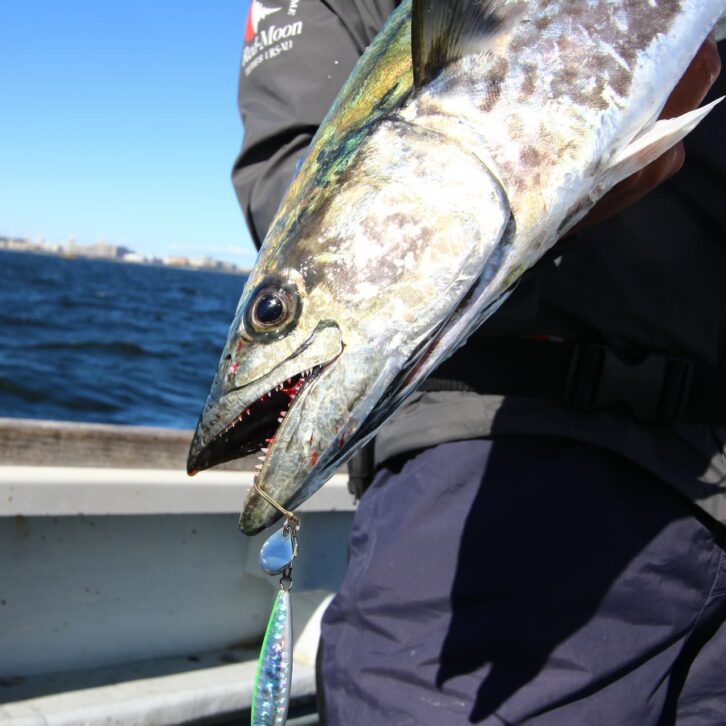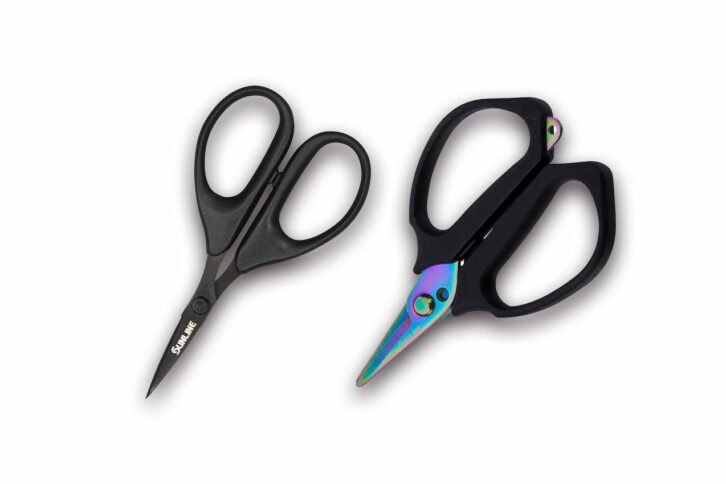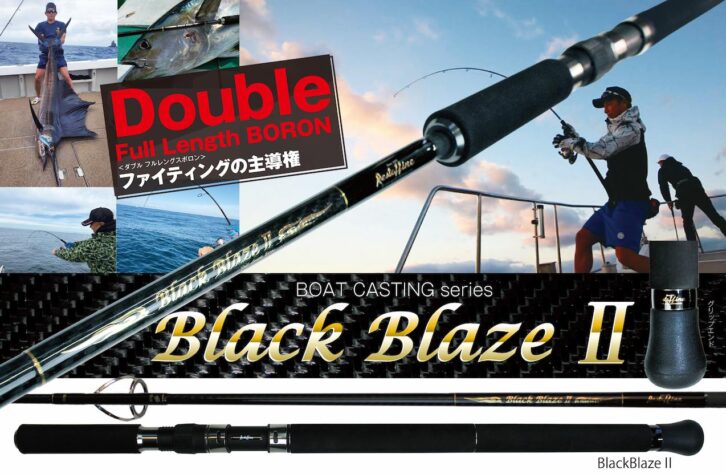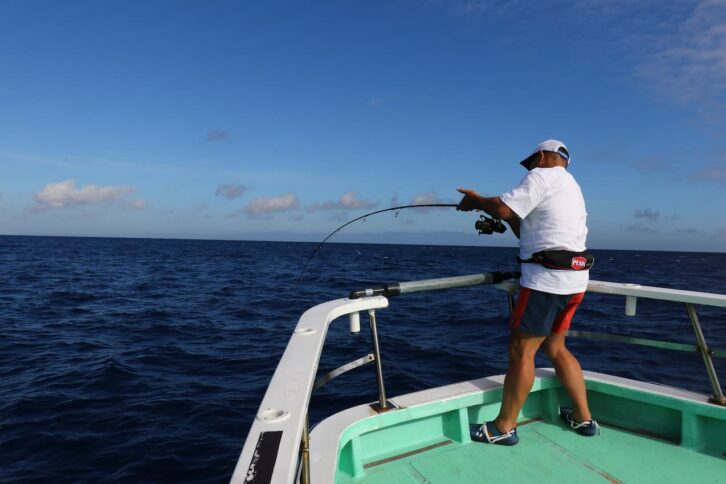5 fish in 3 sinks.
The bite never stops!
Deep in the Bungo Channel The Day the Snapper Came Out of the Deep Bungo Channel
The Bungo Channel in Oita Prefecture is known as a top-notch fishing point, with water depths of around 100 meters and currents as fast as 5 knots at the maximum. It is a popular spot for anglers who enjoy tie-ruba fishing, as it is a year-round target for red sea bream over 80 cm in length, and can also be enjoyed in large numbers. Therefore, many anglers visit the area from all over Kyushu. Mr. Masuo Ueda of Rise Japan, whose hometown is Oita, tells us about the attraction of the Bungo Suido sea bream game.
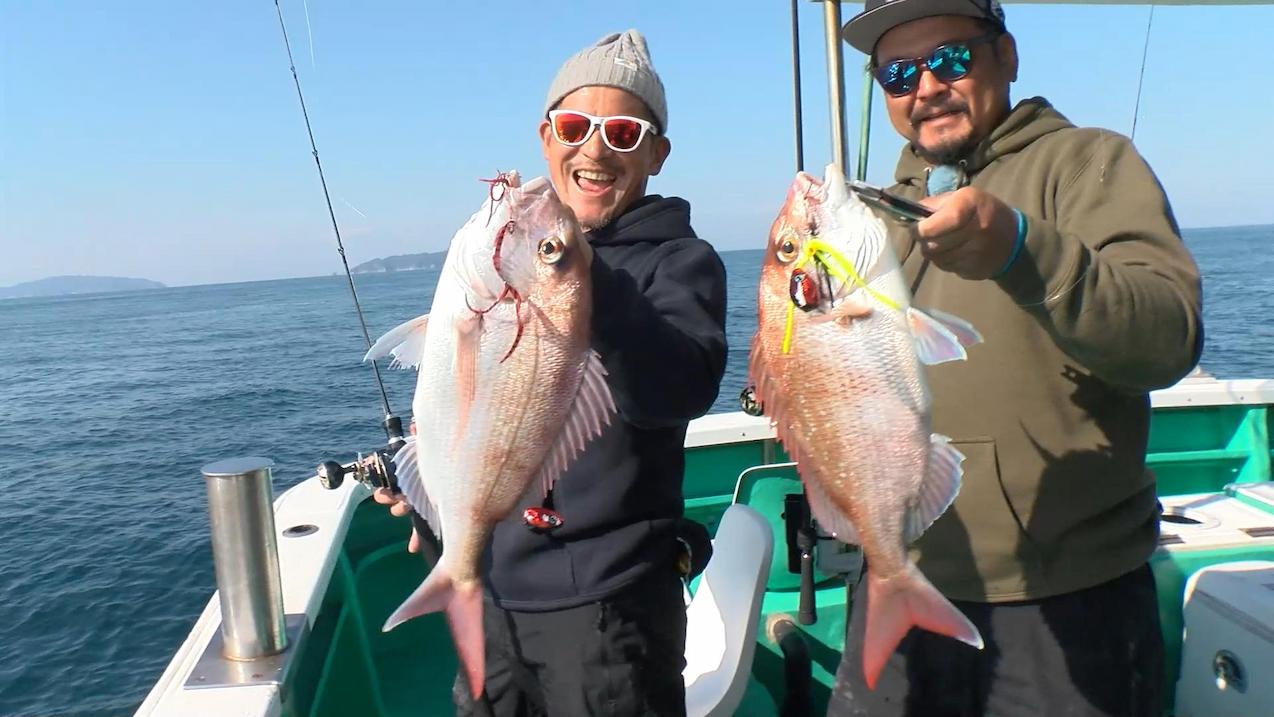
INDEX
The fish have already caught the pattern and the bites keep coming!
Mr. Masuo Ueda of Rise Japan visited the Bungo Channel in Oita Prefecture for the “Lure Paradise Kyushu TV” interview. He said it had been a long time since he had visited this area, but from the very first run, snapper were hitting as if to welcome Mr. Ueda’s homecoming.
The depth of the water is about 100 meters, which is a deep area located in the middle of the Bungo Channel. Surrounding the area is a fleet of boats targeting hairtail. It was raining lightly but there was no wind, making fishing easy. When Mr. Ueda targets this area, he usually uses a 200- to 300-g “Namidama TG Barrel,” but in today’s calm sea conditions, his first choice was a 150-g “Namidama MEDAMA. The color was reddish black with a stock unit thick and short curly. When it came to the surface, it was a good-sized snapper with the hook stuck in the middle of the canoe.
Ueda said, “The sun wasn’t shining and it was dark, so I chose the akakin, which gives a good silhouette.
As I was commenting on the catch, Shunsuke Goto, who was fishing with me, also got a hit. As we exchanged conversation, Ueda-san was next, and the hits and bites continued again. Ueda did not manage to catch any fish, but he continued fishing without a clouded expression on his face, and the bites kept coming. He seemed to have caught the pattern right away, saying, “The red croaker may be the strongest today. Mr. Gotoh also got a bite right after that, and Mr. Gotoh said, “They were biting on the bottom, so I targeted mainly the bottom and got bit. He was using a 125g “Namidama TG (stock unit),” solid orange in color.
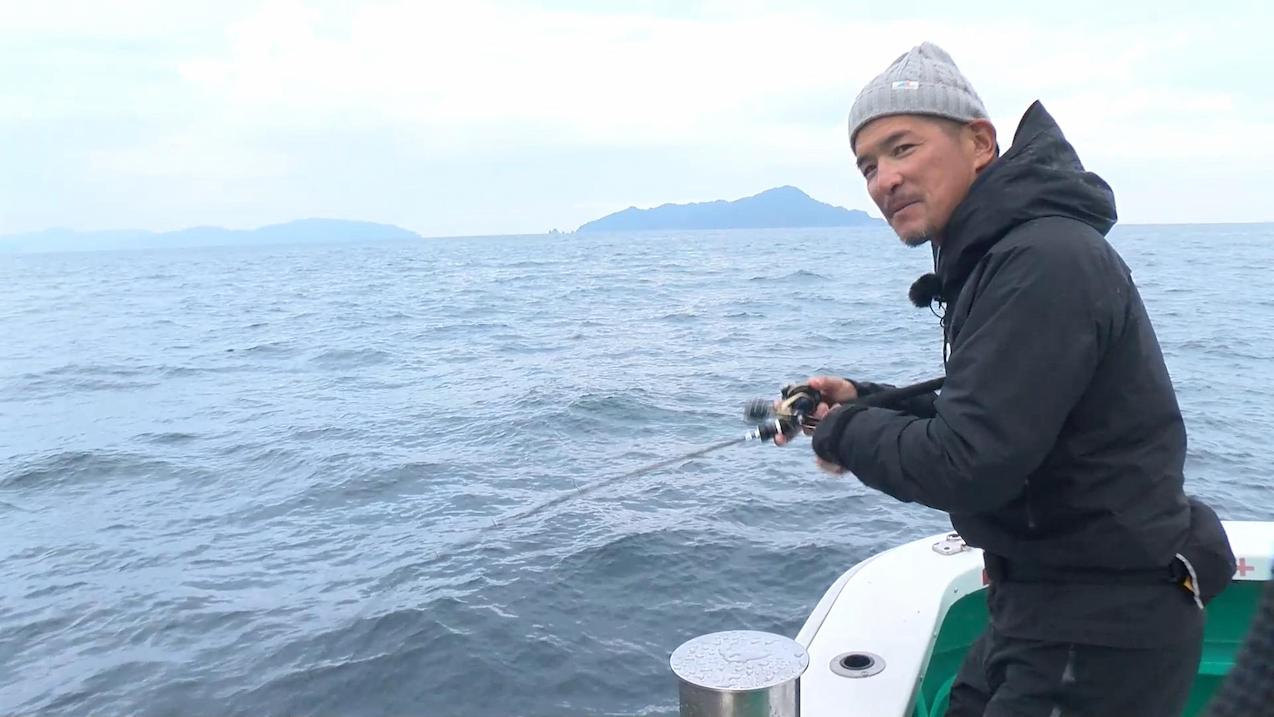
Mr. Ueda talks about tips for fighting tilefish to prevent them from falling apart. It is not necessary to pump the rod or stir it up too much.

Mr. Ueda says that the image color of Rise Japan in 2024 will be yellow. He changed to a 150g chart (the unit is a full chart of geso curly) of “NAMIDAMA MEDAMA” and caught a tie.
Caught a lot of TAI even after changing to a LYJIG!
The bites continued to come in on the tilefish, so Mr. Ueda switched to a metal jig, Rai Jig SLJ 125g in the event’s limited Rise color. On his first cast, he got his sixth or seventh hit of the day. The reason the hits kept coming, he said, “It’s important to match the range and speed.
With the hits coming in rapid succession, Ueda says, “When fishing is good, I like to try different things. In his hand was a “Namidama MEDAMA” 150g chart orange with a big curly tail attached. The unit is a doodle curly orange-gold dot. Then he said that big lures catch big fish, and he dropped the tie-laba into the water and caught a big-sized red sea bream as he had aimed!
After that, he put in the “Namidama MEDAMA” equipped with a blade to further intensify the wave action, and caught his sixth fish of the day.
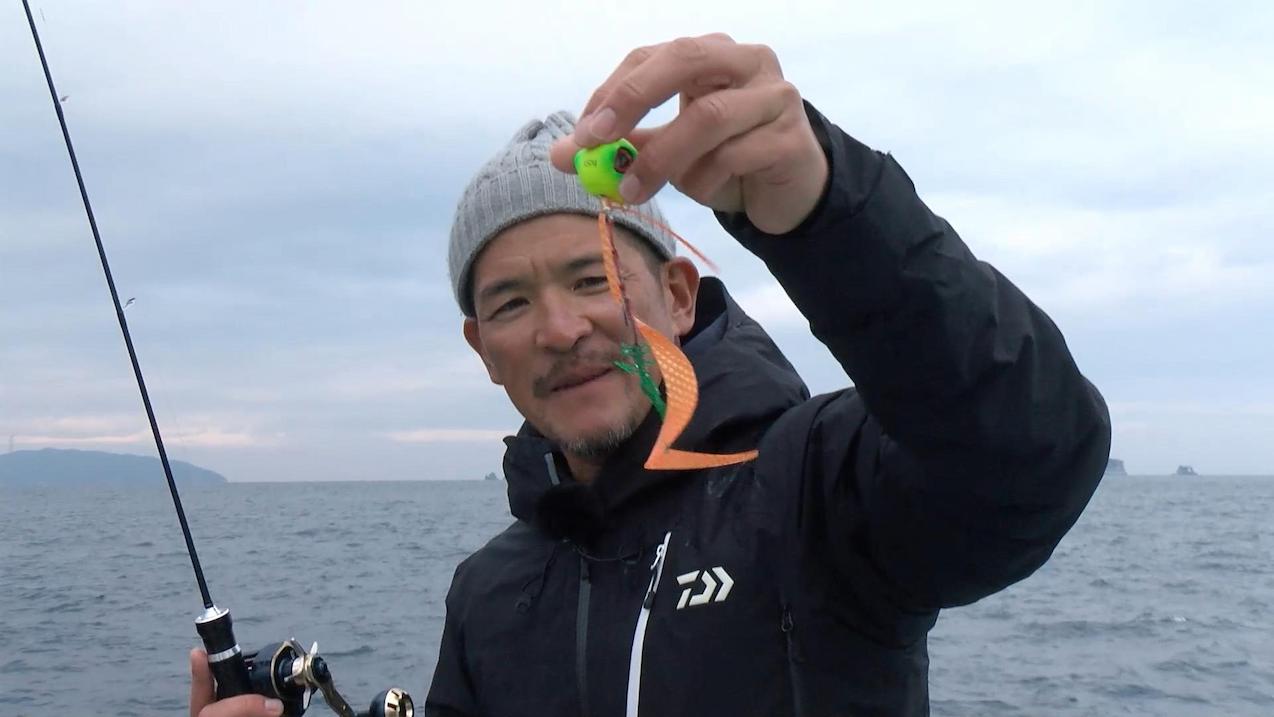
He said that big lures catch big fish, and he caught a good size fish with “NAMIDAMA MEDAMA” equipped with “DODE CURLY” which has strong wave motion!
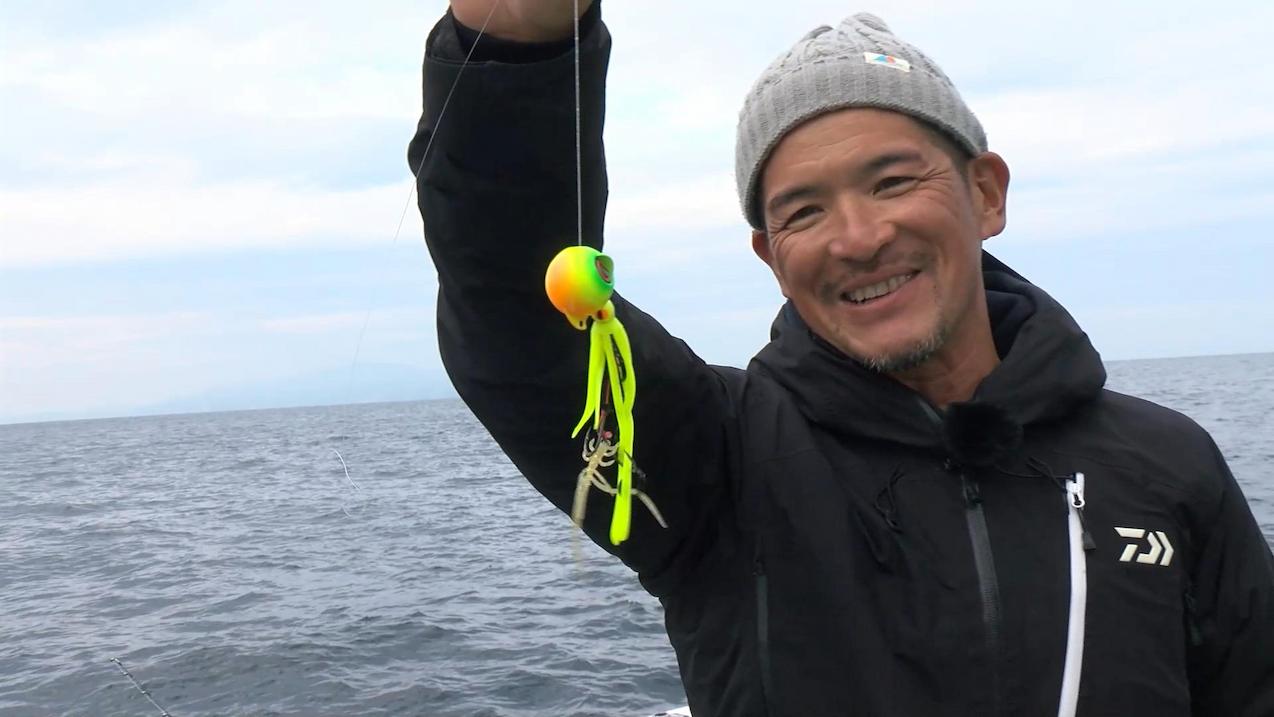
Consecutive hits on the chart orange “Namidama MEDAMA” 150g! The unit is a full chart of Geso Curly

A blade is attached to further strengthen the wave motion. The tie I just caught spit out squid, so I changed the unit to Geso Curly’s UV clear and caught it!
Reaction fishing works!
The seventh fish was caught at the end of the tide when the bites were getting a bit far away. Mr. Ueda broke out of this situation by focusing on reaction fishing.
He said, “The tide was moving, so I tried reaction fishing. Normally, reaction fishing involves dropping a tilefish quickly and reeling it in fast, but you can also drop a tilefish quickly, make the tilefish notice the fall, get it to follow you, and then reel it in slowly to get it to bite,” said Ueda.
In other words, it is reaction fishing based on the difference in speed, and it worked well and produced a lot of bites. The weight of the “Namidama TG Barrel” was 200 grams (sticky orange), and the unit was an orange-black zebra with a thick and short curly line.
Reaction fishing is effective when used with pinpoint timing, and sometimes the bites do not last. In such situations, Mr. Ueda’s next move was to use the “Namidama TG Barrel” 200g red and black with a unit under development. The feature of this unit is the fusion of a thin tie and a curly tail with strong wave action. This is what we are developing to break through tough situations. After hitting again with this one, he decided to try yet another model under development.
Set on the “Namidama” is a big-size curly tail derived from the “Geso Curly. Its code name is Geso Curly Jumbo. This proto was made with volume in mind, and with an eye toward targeting yellowtail as well as sea bream.
And with this proto, we naturally caught a few more snapper, and then we had to stop fishing. After all was said and done, the fishing was so enjoyable that the bites kept coming so fast that it made me anxious. It was a day of such good fishing that it could be said to be the day when red sea bream sprang up in the Bungo Channel.
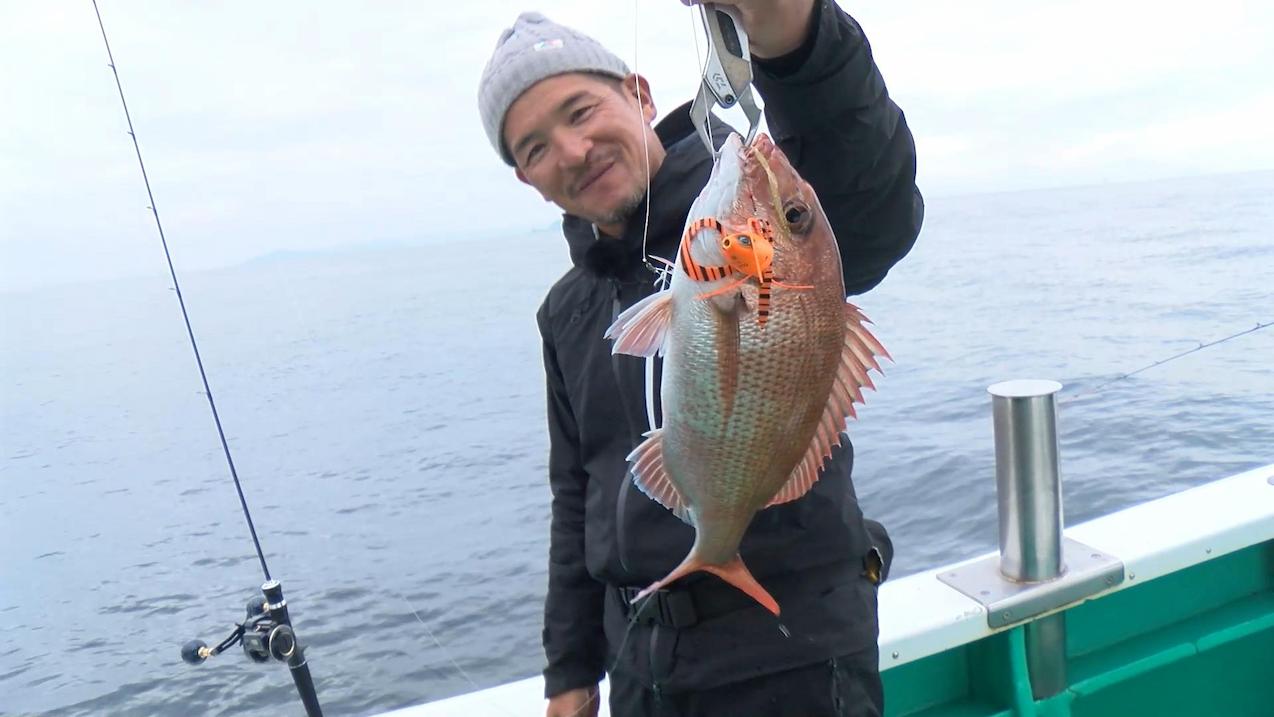
Using a 200g “NAMIDAMA TG Barrel,” I caught my seventh fish by reaction fishing with a fast fall and a slow reel up.
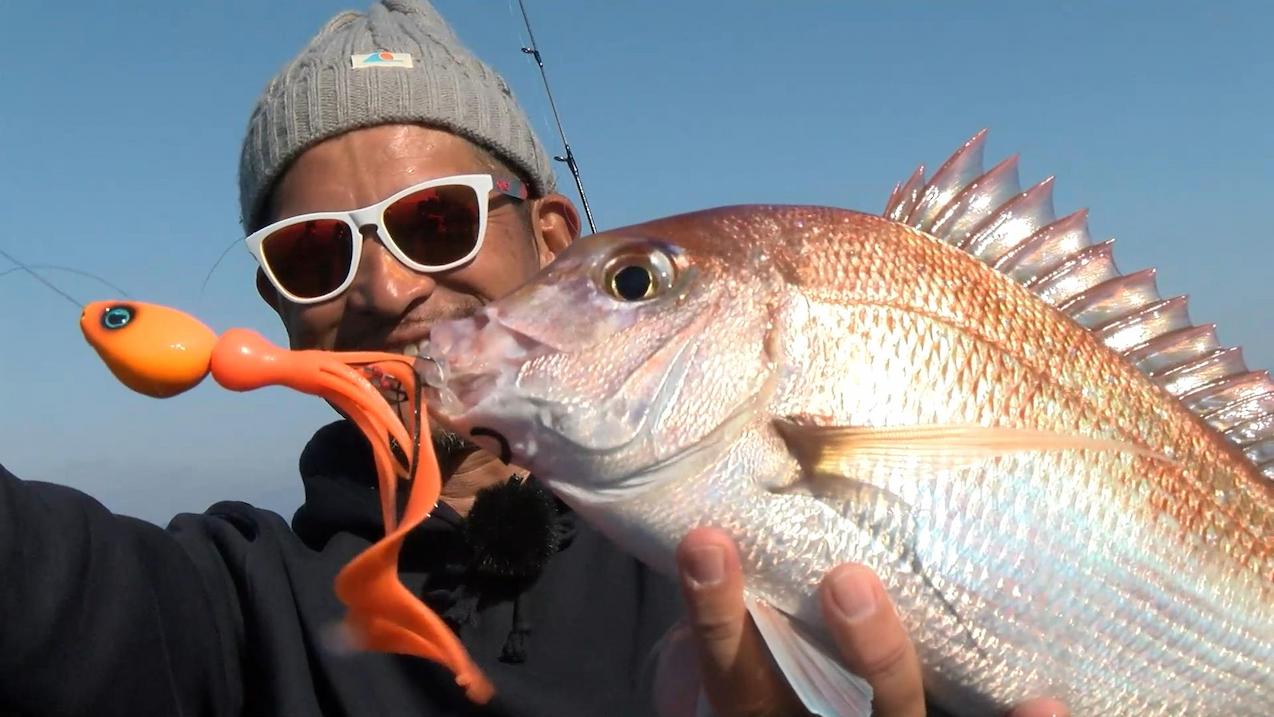
This is a prototype that we made because we wanted to create a strong sense of volume. The code name is “Geso Curly Jumbo.
For information on the Lure Paradise Kyushu TV program, click here!
Please check the items in the text below.
Rise Japan https://rise-japan.jp/


